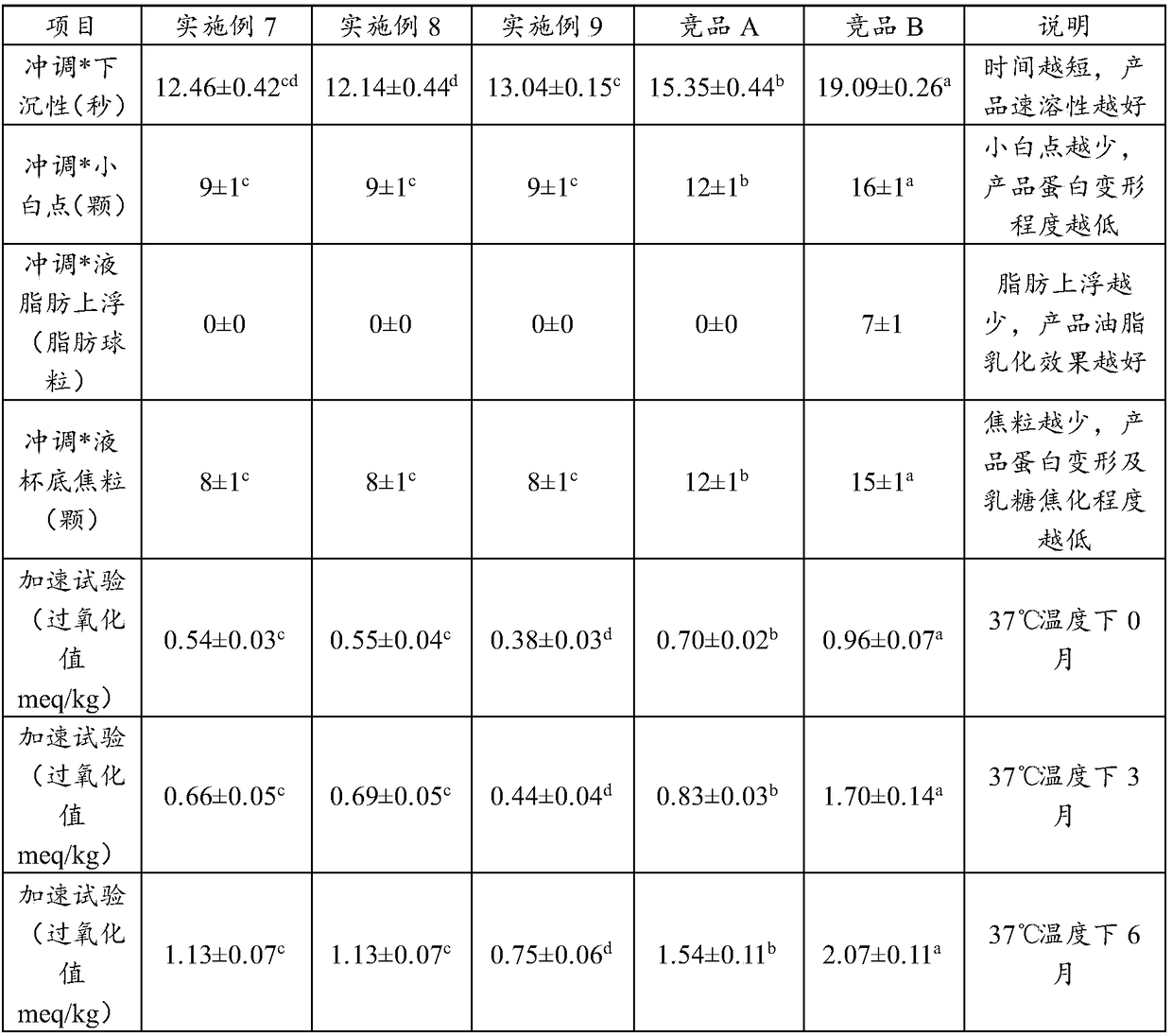Lactose-free infant formula food and preparation method thereof
A technology for infant formula and infant formula, which is applied in the direction of sugar-containing food ingredients, oligosaccharide-containing food ingredients, and inorganic compound-containing food ingredients, etc. It can solve the problems of biologically active substances that are not suitable for production, large investment, and limited sales channels.
- Summary
- Abstract
- Description
- Claims
- Application Information
AI Technical Summary
Problems solved by technology
Method used
Image
Examples
preparation example Construction
[0047] The invention provides a method for preparing lactose-free infant formula, comprising the following steps:
[0048] A) preparation of vegetable fat powder:
[0049] Dissolving glucose syrup and casein in water to obtain a mixed aqueous solution;
[0050] Dissolving mono-diglyceride fatty acid esters in refined vegetable oil to obtain a mixed oil solution;
[0051] After mixing the mixed aqueous solution and the mixed oil solution, adding a mixed solution of sodium dihydrogen phosphate, sodium citrate and potassium citrate for mixing and emulsification to obtain an emulsion;
[0052] The emulsion is homogenized, sterilized and spray-dried to obtain vegetable fat powder;
[0053] B) Preparation of lactose-free whole milk powder:
[0054] Ultrafiltering the raw milk to obtain a filtrate;
[0055] mixing the filtrate with lactase and performing enzymolysis to obtain an enzymolysis solution;
[0056] Spray-drying the enzymatic hydrolyzate after sterilizing it to obtain ...
Embodiment 1
[0117] 1) Mixing of ingredients: first dissolve 480 kg of glucose syrup and 53 kg of casein with warm water at about 55°C in a certain proportion, then add 28 kg of mono-diglyceride fatty acid esters to 430 kg of refined vegetable oil, then mix the two, and finally Add 3.5 kg of sodium dihydrogen phosphate, 2.2 kg of sodium citrate, and 3.3 kg of potassium citrate (add after dissolving and diluting with water), adjust the concentration of the mixture to about 50%, and emulsify at high speed for 15 minutes.
[0118]2) Preheating and homogenization: Preheat the emulsified material to a temperature suitable for homogenization of 70°C, and then perform homogenization with a homogenization pressure of 35MPa.
[0119] 3) Sterilization: Sterilization temperature 95°C, 24 seconds;
[0120] 4) Spray drying: when spraying, the temperature of the concentrated milk is kept at about 52°C, the vacuum degree of the spray chamber is kept at about 200Pa, the nozzle aperture is 1.25mm, the inle...
Embodiment 2
[0122] 1) Ingredients mixing: first dissolve 460 kg of glucose syrup and 58 kg of casein in warm water at about 60°C in a certain proportion, then add 23 kg of mono-diglyceride fatty acid esters to 450 kg of refined vegetable oil, then mix the two, and finally Add 3.6 kg of sodium dihydrogen phosphate, 2.2 kg of sodium citrate, and 3.2 kg of potassium citrate (add after dissolving and diluting with water), adjust the concentration of the mixture to about 48%, and emulsify at high speed for 15 minutes.
[0123] 2) Preheating and homogenization: Preheat the emulsified material to a temperature suitable for homogenization of 68°C, and then perform homogenization with a homogenization pressure of 33MPa.
[0124] 3) Sterilization: Sterilization temperature 96°C, 24 seconds;
[0125] 4) Spray drying: when spraying, the temperature of the concentrated milk is kept at about 53°C, the vacuum degree of the spray chamber is kept at about 190Pa, the nozzle aperture is 1.30mm, the inlet ai...
PUM
 Login to View More
Login to View More Abstract
Description
Claims
Application Information
 Login to View More
Login to View More - R&D
- Intellectual Property
- Life Sciences
- Materials
- Tech Scout
- Unparalleled Data Quality
- Higher Quality Content
- 60% Fewer Hallucinations
Browse by: Latest US Patents, China's latest patents, Technical Efficacy Thesaurus, Application Domain, Technology Topic, Popular Technical Reports.
© 2025 PatSnap. All rights reserved.Legal|Privacy policy|Modern Slavery Act Transparency Statement|Sitemap|About US| Contact US: help@patsnap.com


